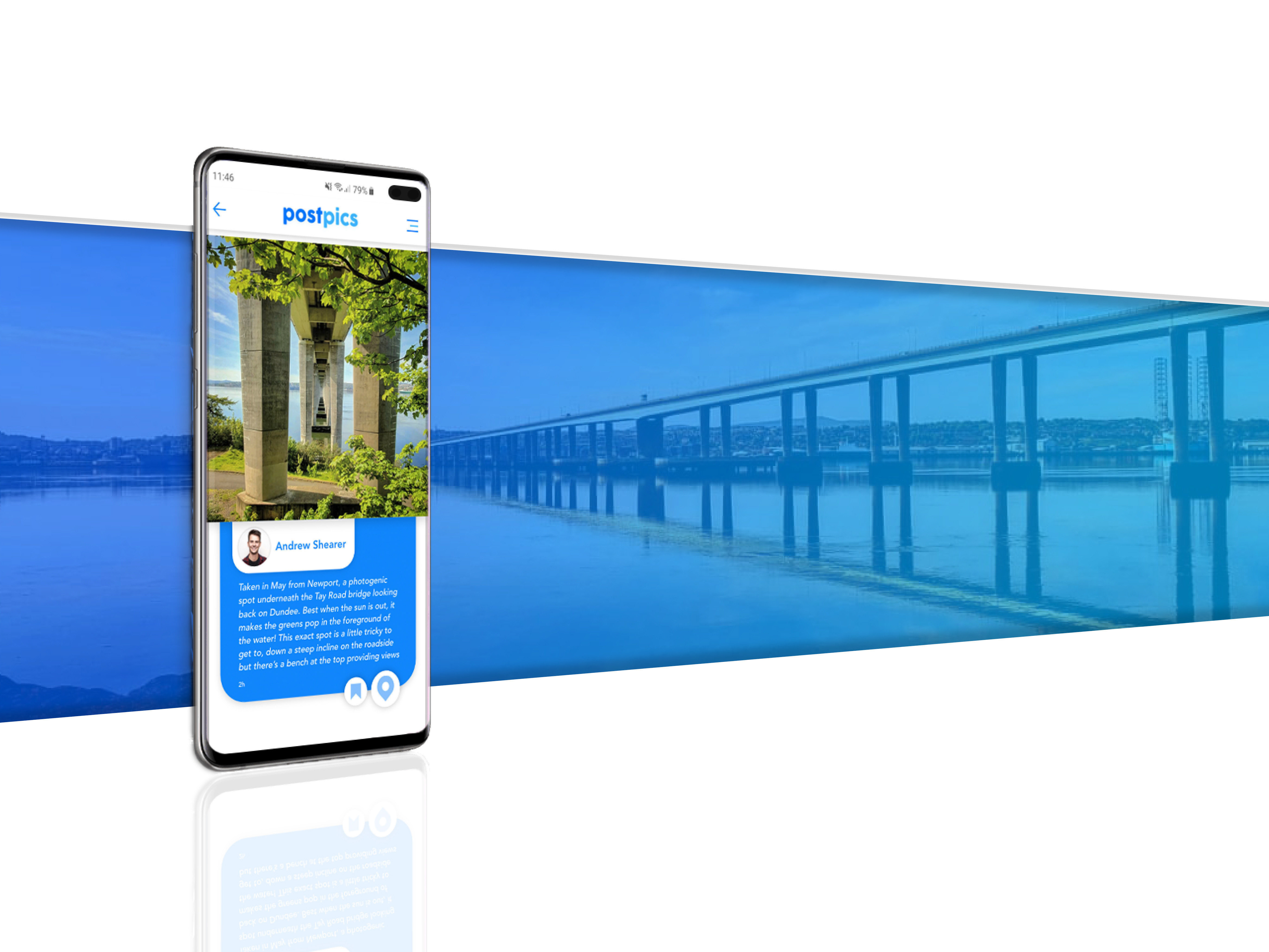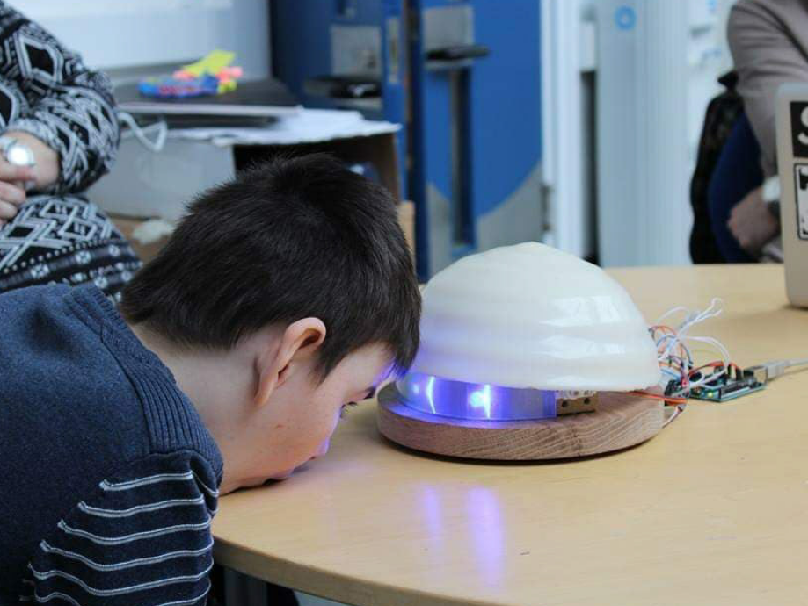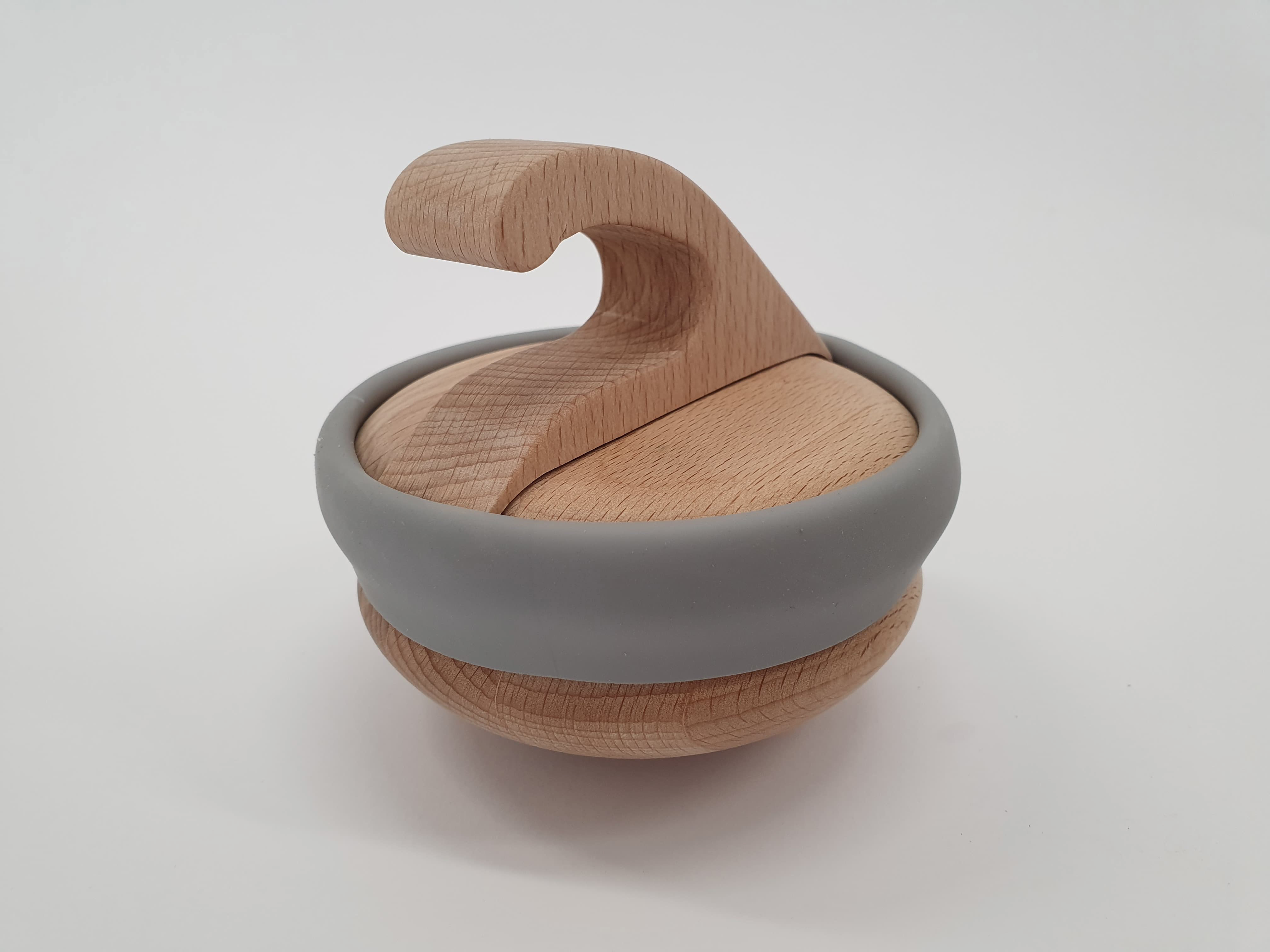The idea behind this installation is to promote wandering through cities - in this case Dundee - to discover new places and expand the centre focus of where people usually go.
“How can you decentralise Dundee using mindfulness and navigation.”
Working on this project as a group, the aim was to explore decentralising Dundee through an IOT (internet of things) product. Collaboratively we decided early to research into health and sustainability within the city, and from this we looked further into mindfulness. Our research was based heavily on an independent business, Heart Space Whole Foods, which is a sustainable healthy food store in the city. We tried to stretch their morals and values out to the whole city, and to see how we could find out what people think mindfulness is to them as an individual.
Throughout the process, we consistently brainstormed as a group, ideated and asked ourselves new questions around the focus point of this project. From gathering information through our research and questions, we then developed an installation which is a window to Dundee, and it influences people to ‘wander with words’ to find mindfulness in the city.
Early Research
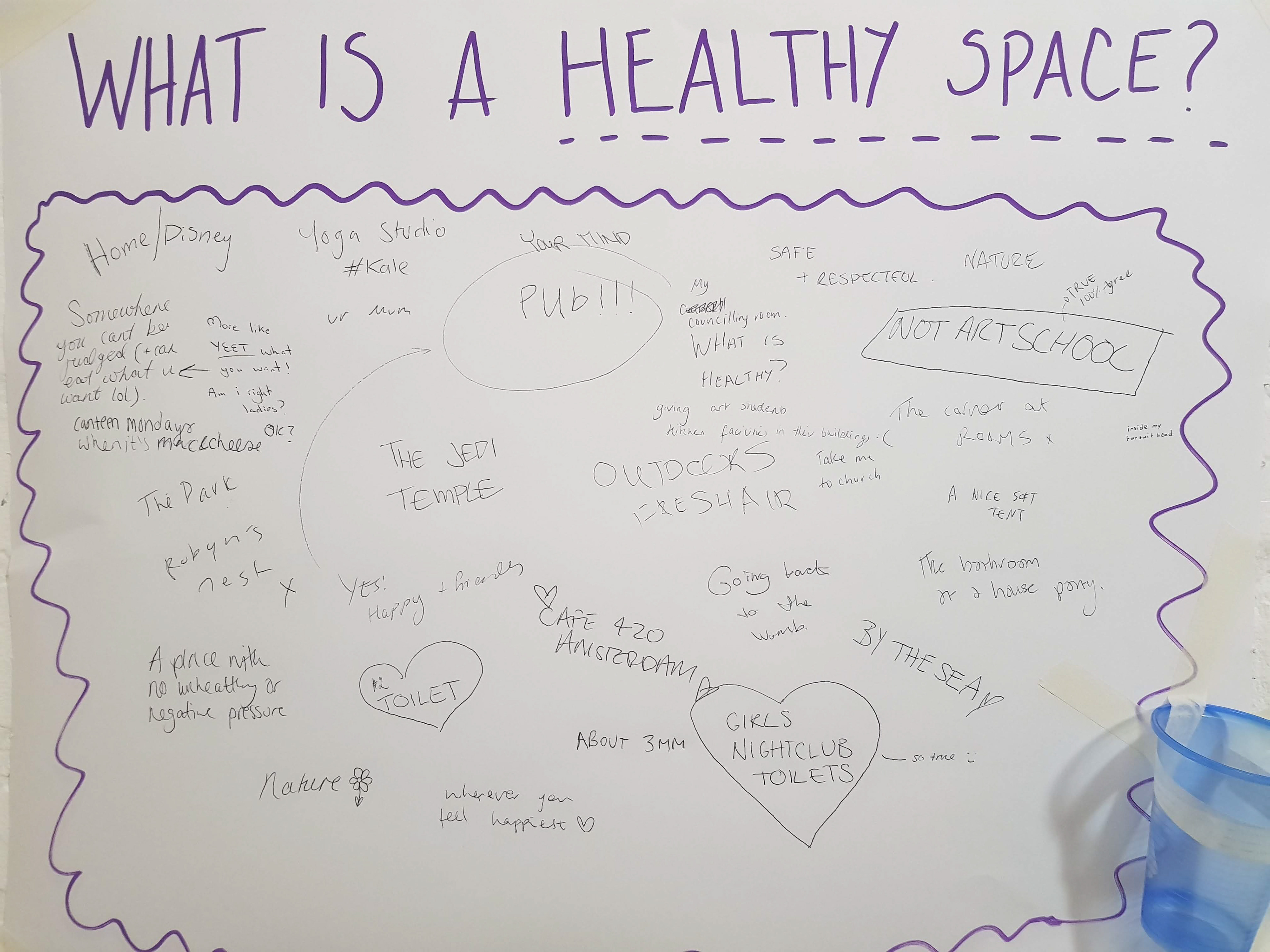


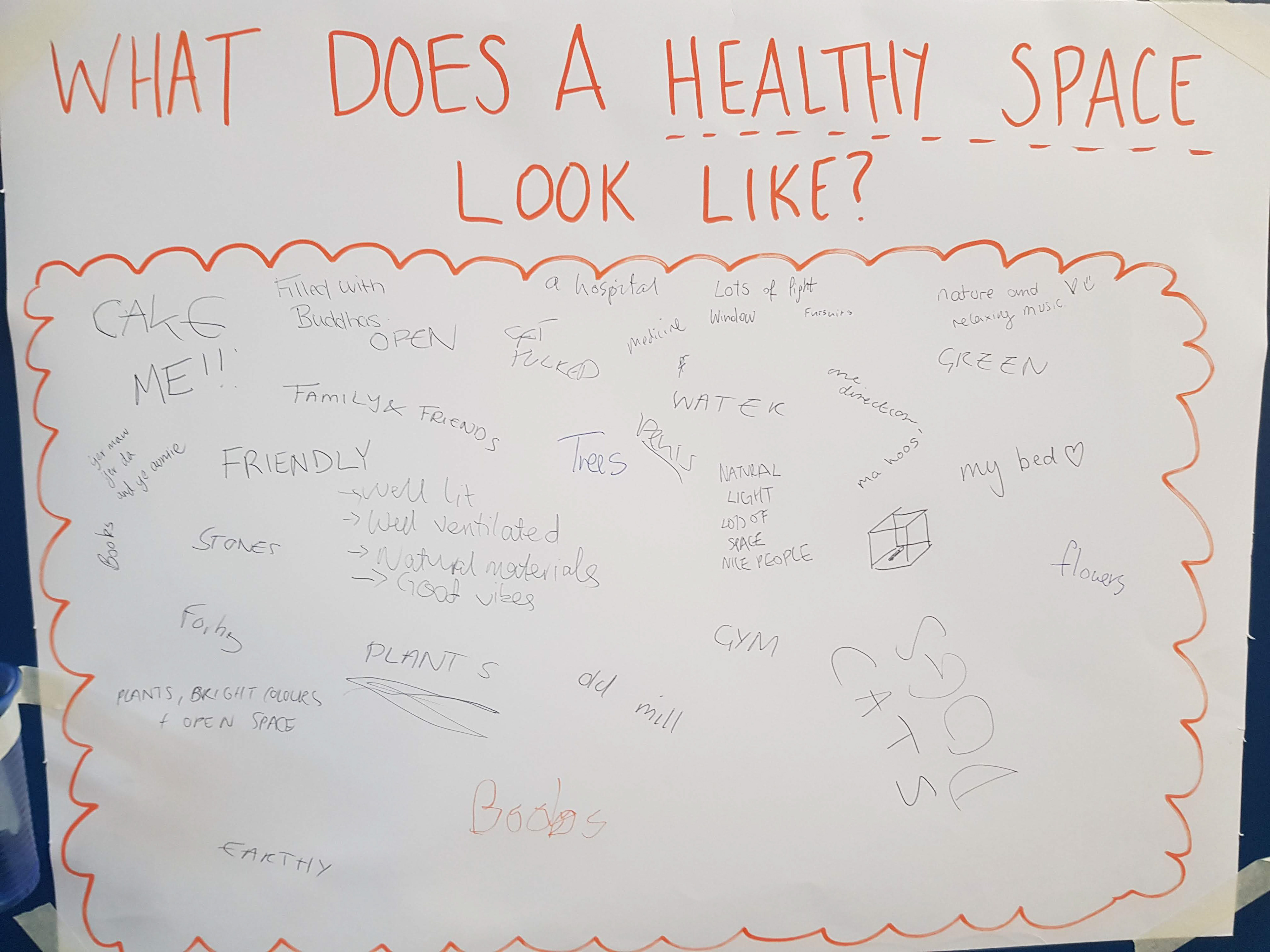
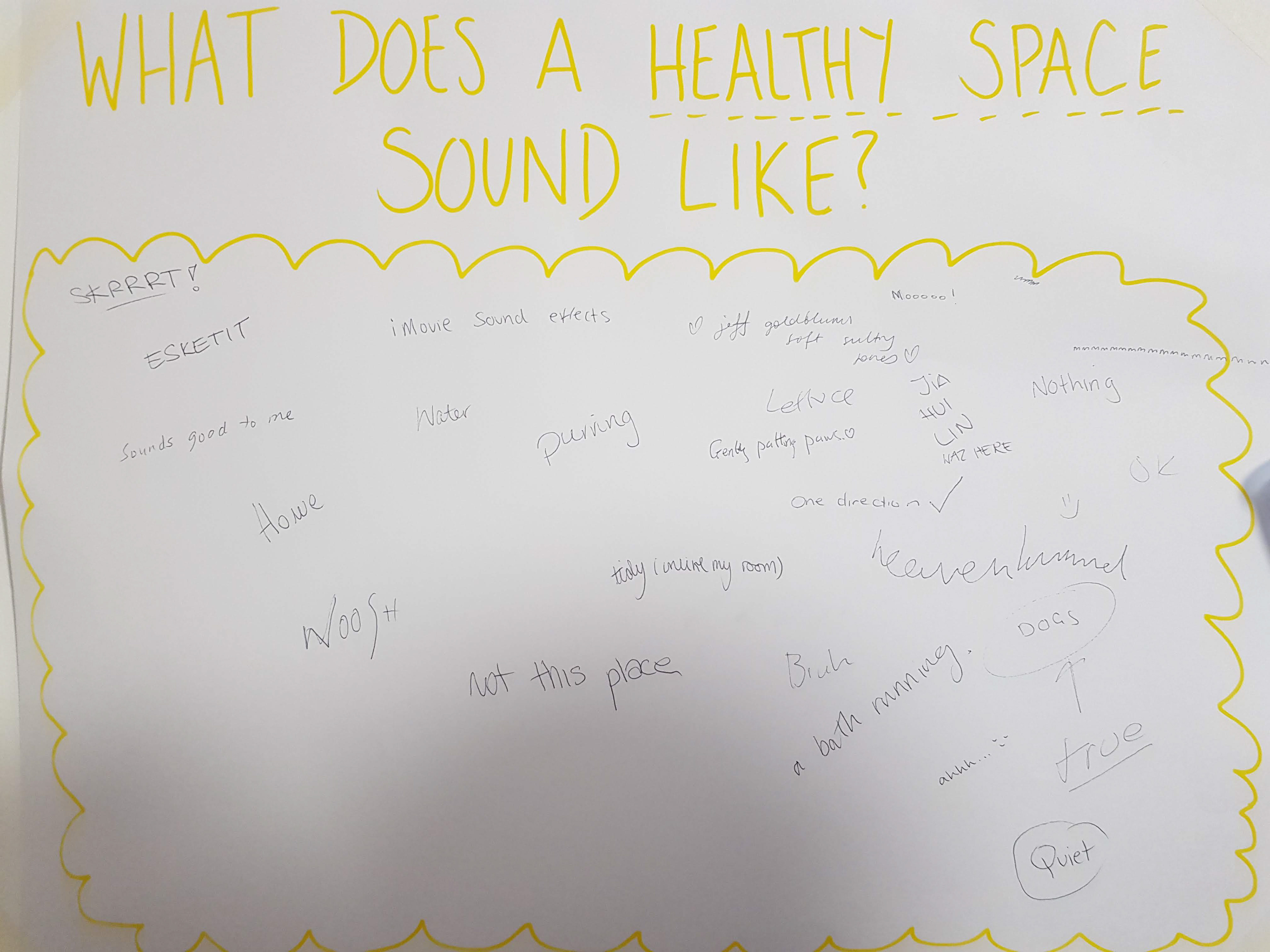
We of course began the research by communicating with Heart Space Whole Foods (HSWF), conducting conversational interviews and exploring their environment. We then took their mantra, and split it into experiential questions based on what a healthy space is. Allowing the public to freely write up their own answers before plotting the findings on a matrix map gave us a wide scope for where to take the project. The matrix axis directed if the results could be found in a public or private space, and if as a product, would it require an input or give an output. The gatherings drew a picture for us which suggested that a product which would be found in a public space, giving data output, is what could work best to decentralise the city.
Ideation

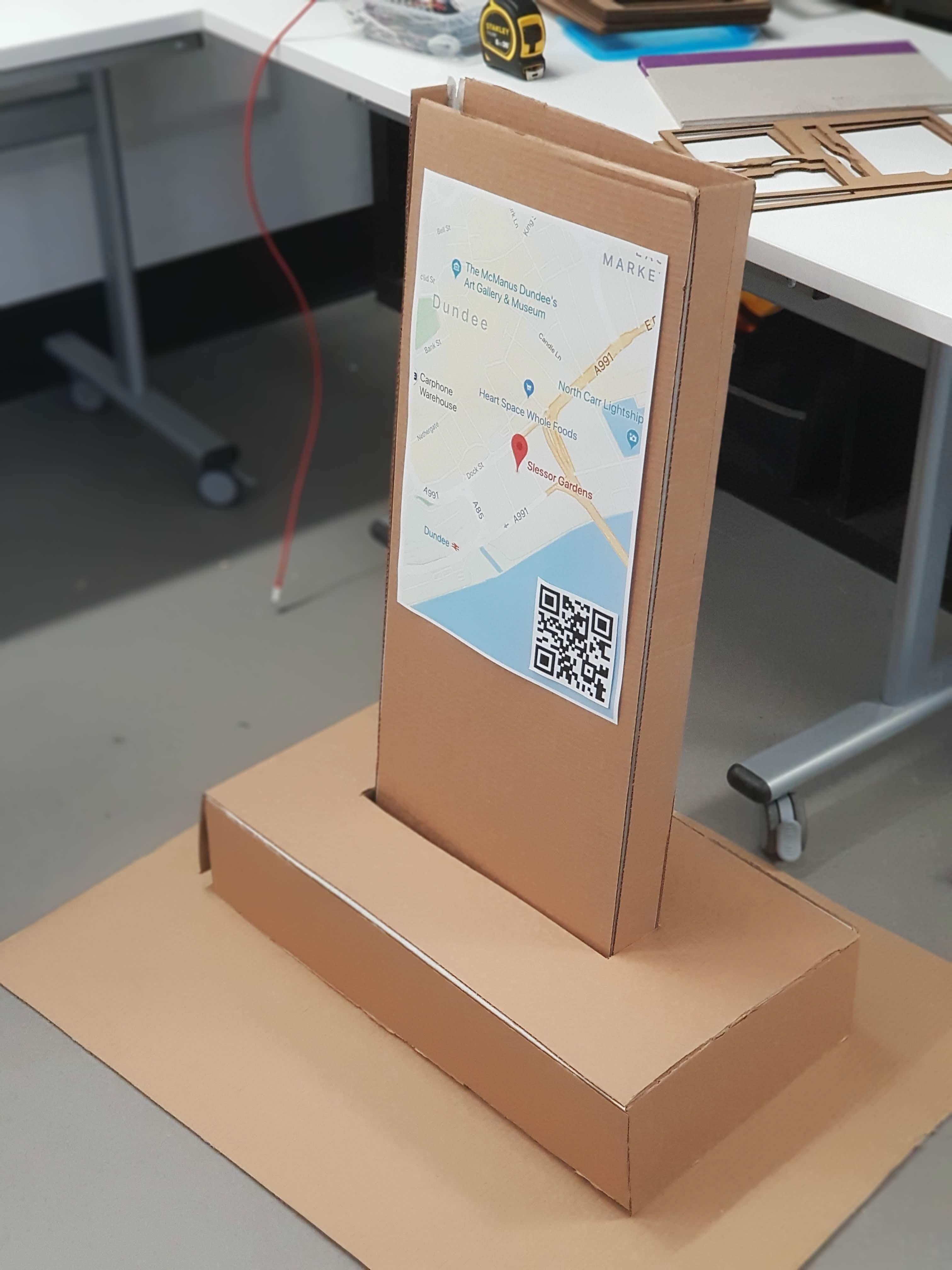

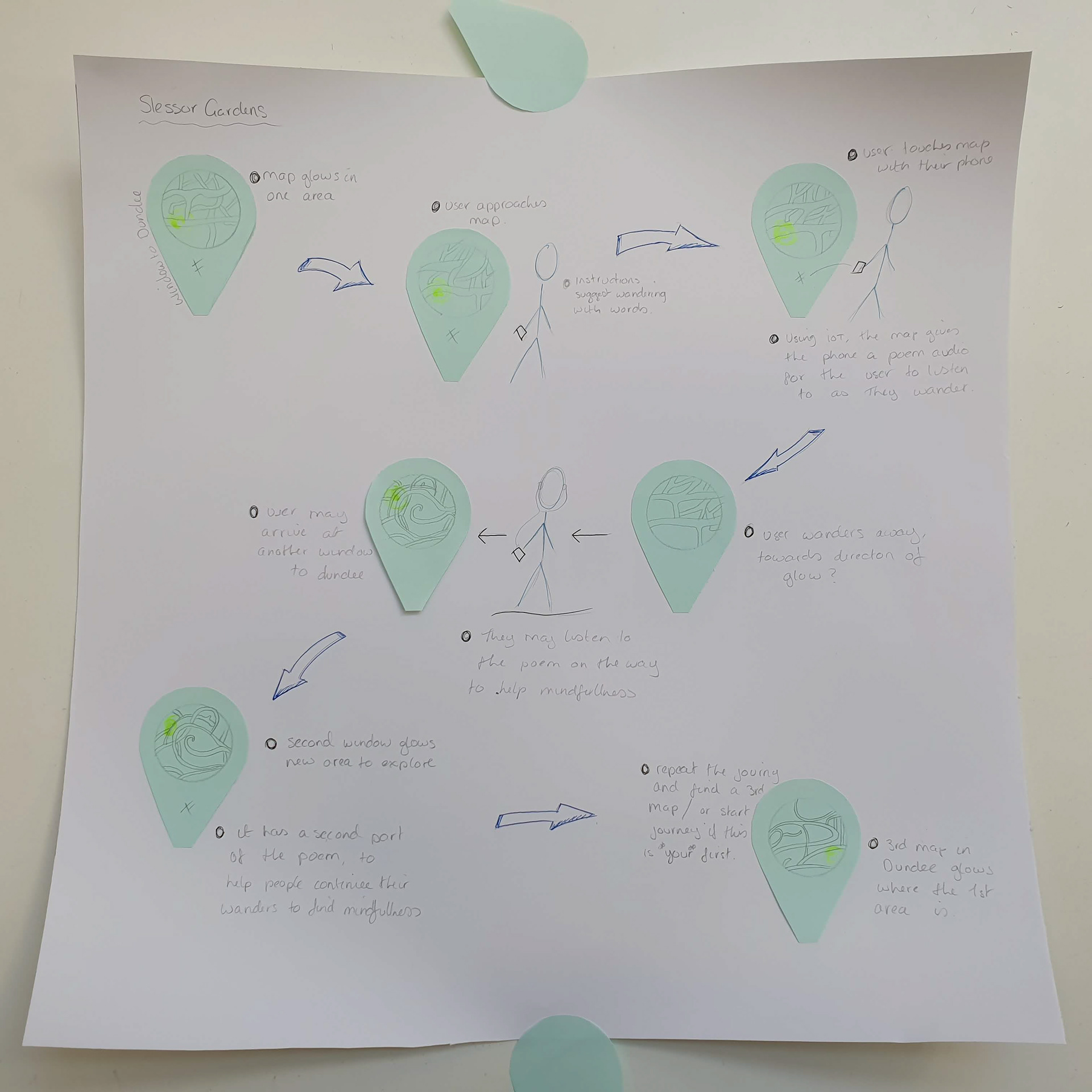
Taking our research findings and progressing forwards with ideas saw us brainstorming routes down many different paths. From mobile applications connected to public hotspots, to city maps integrated with new IOT technology. The area we decided to go for was with the public maps; inspired by monoliths, existing city maps and eventually by Google maps. We created prototypes of various map ideas, and put them to members of the public to find out what they associated them with, how they made them feel and what would make them use the maps. Developing the idea, we took the shape of a map 'pin' and thought instead of pinpointing your current location, it could be used to point you in a new direction, a direction to be followed aimlessly, wandering with mindfulness through the city, something which connected back to our origins with HSWF and healthy spaces.
Being content with the direction of the project, we took time to dissect it deeper. One thing we found during our probes with the prototypes was that the pin would point users in a specific direction, and they would just follow. It gives no allowance for true mindfulness, instead it was just an instruction. Following this further research and reflecting upon our initial findings, we took the original pin concept and turned it into light, which saw the beginning of our next stage prototyping.
High Fidelity Prototyping
The next stage of prototyping was when we created The Window To Dundee. The decisions made at this stage included using abstract map designs to deter users from focusing too heavily on directions, and making it semi-transparent to emphasise that it is window to look further into the city, to help people explore aimlessly using mindfulness. We implemented the map with NEO Pixel technology, which would use IOT to help suggest places in the city for people to wander. The light, rather than a pointer, referenced back to our previous research where we didn’t want to just give out instructions but instead wanted to create a series of ways to help people on their wanders. At this stage, we knew we delved deeper into how this part of the map worked with IOT and explored ways to really connect with users, and to gather final insights we later returned to our roots of this project with HSWF.
Final Concept
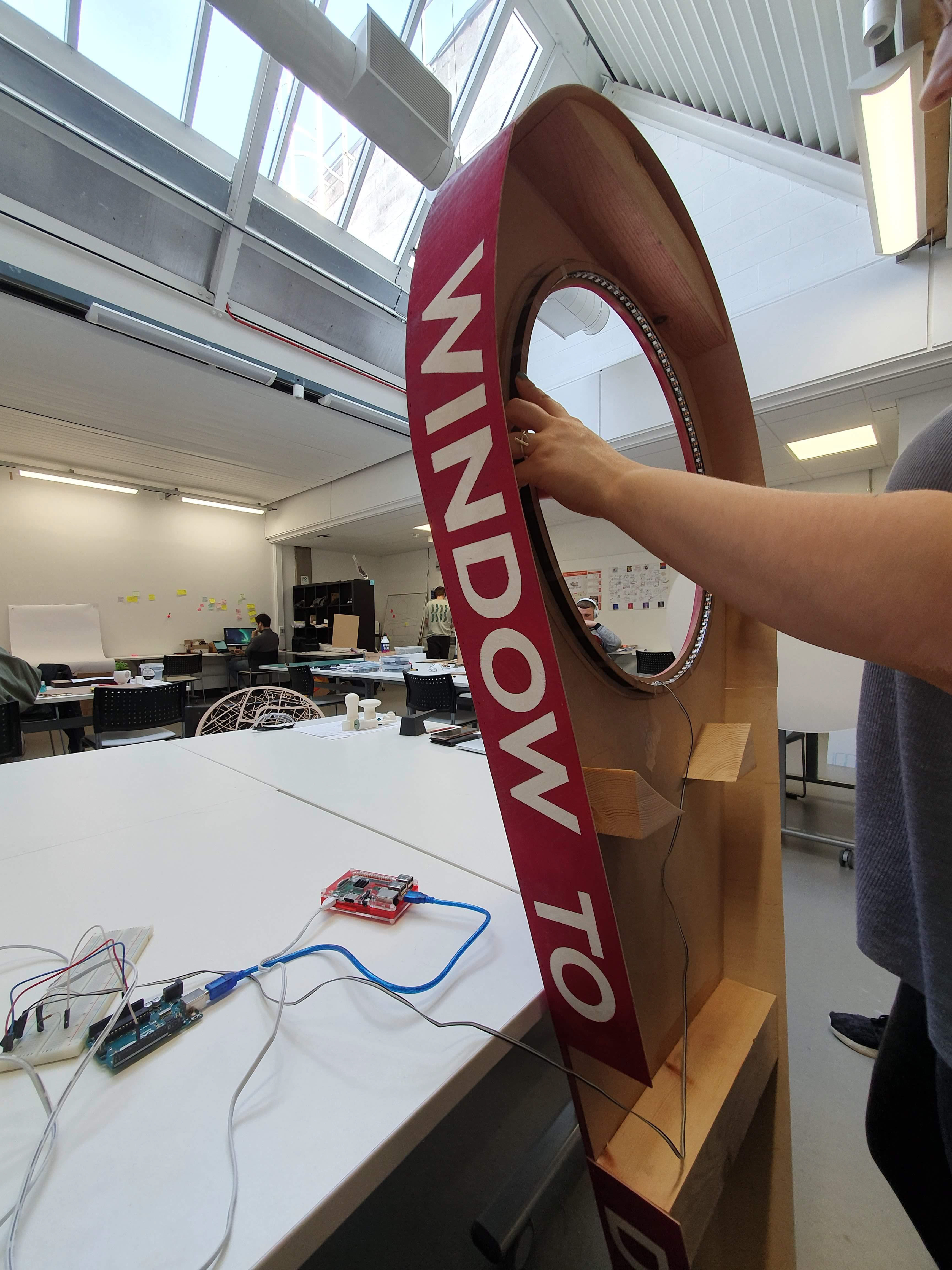

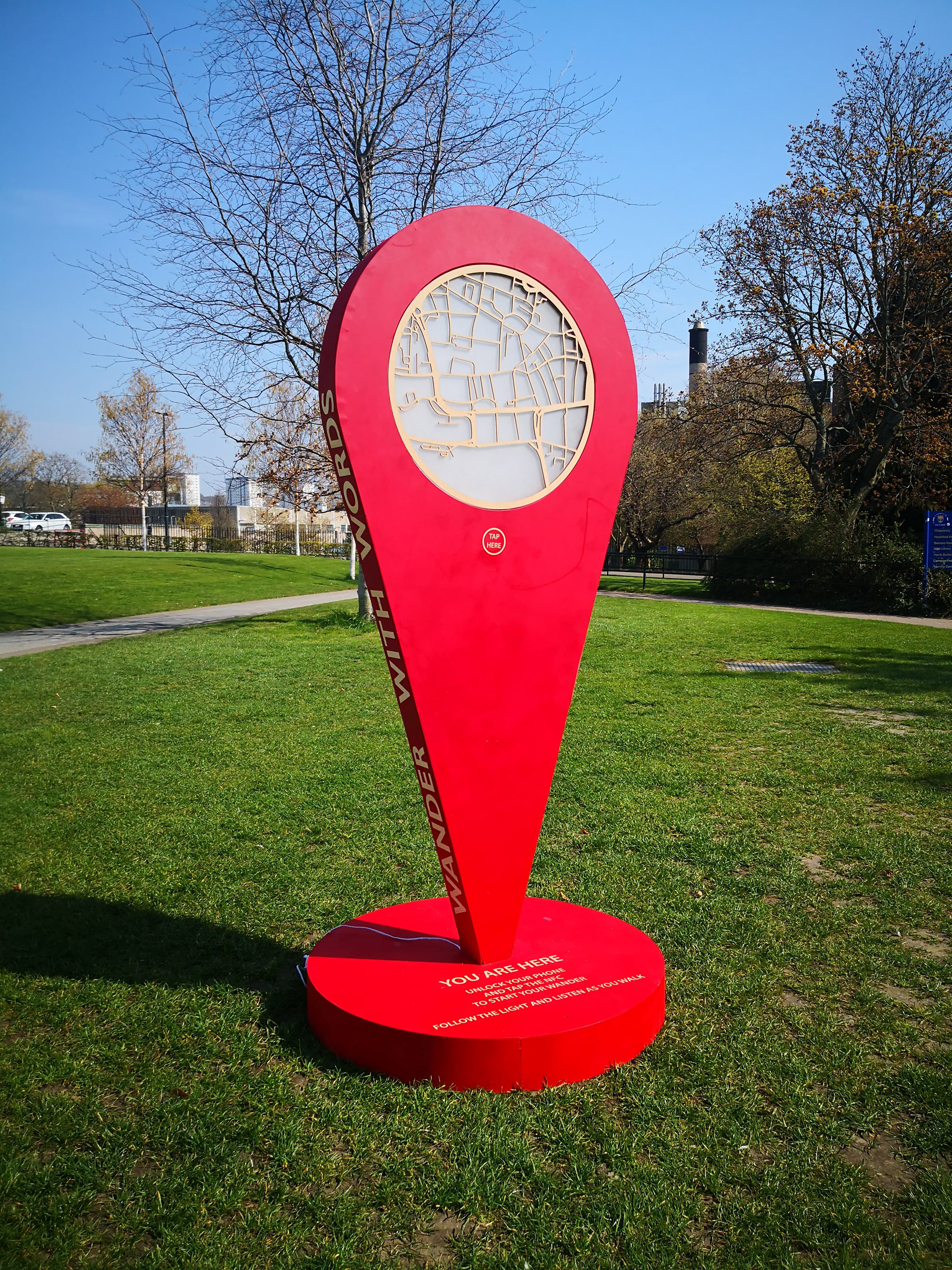
Our final stages of research with HSWF saw us add further dimensions to the product, which made it into the final working prototype seen here. On the face, there is the interactive light map and an NFC spot for users to scan. Upon scanning, the map will light up an area for users to wander next, and will simultaneously ping a poem about the city to their phone using IOT. Poetry; the final jewel in the crown, the idea that gave us the Window to Dundee: Where you Wander with Words.
Our final meeting with HSWF gave us this inspiring insight to add sound to the product, to help users dig deeper in their minds making the journey they go on more meaningful and personal, whilst still exploring outdoor spaces. The possibilities for this product to go even further were considered in great detail too, such as using many windows in the city to connect the dots for users, to help decentralise the flow of people in each space, and to connect the poetry from each map, which would provide a goal for users to visit them all, thus pushing further adventure to complete the story of the city window.



